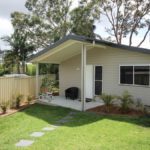Since the state of California passed some new, friendlier rules in 2020, ADUs have massively grown in popularity. The return on investment is incredible if you rent out your new granny apartment. If you want to house a family member, the ADU expenses of a monthly loan payment are usually significantly lower than the rent for a comparable-sized apartment.
However, ADUs imply a relevant financial commitment. Even if you have prior experience remodeling a house, some of the costs can come out of nowhere.
We don’t want you to be shaken up! So, when you plan your granny flat, keep these 5 secret ADU costs in mind or schedule a free consultation with one of our specialists.
ADUs with a floor area of more than 750 square feet are required to pay construction and impact fees
What are the differences between production and impact fees? Fees that fund infrastructure upgrades, programs, and amenities are known as user fees. At any point, about any structure has had to compensate them. However, under the current rules, you can stop paying D&I fees if your ADU is less than 750 square feet.
If your ADU is bigger than 750 square feet, your jurisdiction will determine your D&I payments with the fees that will apply if your primary house were constructed today. The price per square foot is the price that your ADU will be paying.
It’s important to know where you want to go with your expansion
Growing the garage from the side is much more costly than expanding from the front and back. A simple pitched roof is typical of garages. The load-bearing side walls are used in this style of construction. To stretch through a side wall and maintain its load-bearing capability, you’ll need to heavily strengthen the wall. You don’t have that dilemma if you expand to the front, where the garage door is. You’ll still save money and you won’t have to demolish a wall because a wide gap already exists.
Separate energy meters for the best
If you want to rent out your ADU, it’s a good idea to get the utilities on different meters so that your tenant’s bills aren’t mixed up with yours. This is especially crucial if you want to rent out both the main house and the ADU in the future.
Installing an aftermarket sub-meter that uses an algorithm to show you precisely how much water, electricity, or gas the ADU tenant is using is a wonderful new choice that you can apply, too. The utility provider will not send the resident a special bill, but you will be able to show them the details and charge the appropriate amount to their rent per month.
Solar panels might be needed for newly constructed ADUs
Often some ADUs are converted garages. Solar panels are not required for garage conversions. Fresh construction, on the other hand, is. Only if the place is too shady for solar panels to be functional can be an exemption (a building inspector will be checking on that after you call us).
The good news is that your solar panels will be eligible for a federal tax credit of 26% in 2021. Even if a solar installation isn’t needed, now is a good time to take advantage of the credit. It is guaranteed until 2022, but not after that.
Cost of materials changes with time
Lumber, cement, and steel prices can fluctuate from year to year. Although there is no way to manage the cost of supplies, you should discuss scheduling with our staff to get a feel of how things will progress. You’ll be in better shape if the funding is in order and you have a full collection of building plans for us to study. Remember that even our contractor bids have a time limit.
Bonus tip: As a rule of thumb, always apply 10% to the building budget as a precaution. This backup plan will save you in case anything unforeseen happens during construction–or whether you want to upgrade to the beautiful tile you’ve been eyeing!
Start the conversation with our ADUs specialists today. Contact us at (310) 974-3174 or by scheduling an appointment
If you want to see more of our work follow us on your favorite social media platform! We have a Facebook and an Instagram page with photos of our projects, updated information about ADUs in Los Angeles, construction tips and tricks, and more.







